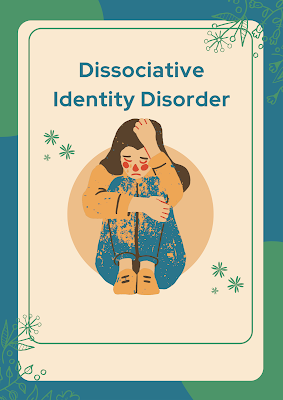What is dissociative identity disorder? Symptoms, Causes, Types and Treatment
What is dissociative identity disorder?
Dissociative identity disorder, previously known as multiple personality disorder, is a condition wherein a person has two or more distinct personality states or identities. Each personality state may have a distinct pattern of perceiving and interacting with the environment around them. This condition often follows experiences of severe trauma.
Symptoms of Dissociative identity disorder
A person with dissociative identity disorder experiences a lack of continuity in their sense of self and personal history. Some common symptoms include:
Identity confusion: The person has difficulties recalling personal information or events that seem relevant to their life. They struggle to remember important details about themselves and their past.
Memory gaps: There are significant gaps in their memory of everyday events and information beyond what would be expected of normal forgetfulness. They may be unable to recall how they got somewhere or what they did.
Depersonalization: They feel detached or disconnected from their own self, emotions, thoughts, memories or body.
Derealization: Their surroundings feel unreal, hazy or dreamlike. Everyday objects and events lose their meaning.
Distinct personality states: They exhibit two or more distinct personality states with their own patterns of perceiving, relating to and thinking about the environment and self. Each personality may have a unique name, voice, preferences and patterns of relating to others.
Blackouts: They experience episodes of amnesia where they cannot recall what happened during a period of time. This is due to a different personality state taking over.
Non-epileptic seizures: Dissociative seizures are fake or psychogenic seizures rather than real brain disorder seizures. They are a physical manifestation of a psychological, rather than neurological, cause.
Causes of Dissociative identity disorder
The exact causes of dissociative identity disorder are not yet fully known, but experts believe it develops as a result of:
Severe trauma in childhood: The disorder often appears after extensive or repeated emotional, physical or sexual abuse during childhood. The abuse overwhelms the brain's ability to integrate thoughts, feelings and memories into a unified sense of self.
Genetic predisposition: Some researchers suspect that people with the disorder may have an innate susceptibility to develop alters following trauma.
Culturally bound beliefs: In some cultures where belief in spirit possession is common, dissociative identity disorder occurs more frequently. Cultural beliefs and expectations may shape how people interpret and express symptoms.
Types of Dissociative identity disorder
Experts differentiate 3 main types of dissociative identity disorder:
Primary: The person has had dissociative symptoms since childhood or adolescence, often following abuse or trauma.
Secondary: The symptoms develop later in life, usually after a traumatic event in adulthood.
Unspecified: This category includes people who do not cleanly fit the primary or secondary types.
Preventive measures for dissociative identity disorder
To prevent dissociative identity disorder:
- Protect children from abuse and extreme neglect. Adults should be vigilant for signs of abuse and intervene early to prevent trauma.
- Provide trauma-informed care for people who have experienced severe stress or adversity. This includes counseling, coping skills and social support.
- Foster children's resilience and coping skills from an early age. Teach them how to process difficult emotions and regulate their responses to stress.
- Implement social programs that support at-risk families and reduce childhood adversity. Address issues like poverty, social isolation and parental mental illness or substance abuse.
Treatment for dissociative identity disorder
The primary goals of treatment are to help alters integrate or fuse into a single identity and reduce symptoms. Treatment options include:
- Psychotherapy: The most common approach is dialectical behavior therapy, a type of cognitive behavioral therapy that focuses on skills to manage symptoms. Other psychotherapies target specific trauma.
- Eye movement desensitization and reprocessing: This helps process traumatic memories and reshape thought patterns to reduce symptoms.
- Meditation: Practices like mindfulness meditation can help bring awareness to different alters and facilitate integration over time.
- Medication: While no drugs specifically target dissociative identity disorder, medications like antidepressants or anti-anxiety drugs may relieve related depression, anxiety or sleep issues.
- Support groups: Groups with people experiencing similar symptoms can provide social support, coping techniques and accountability.
With proper treatment, many people with dissociative identity disorder have significantly reduced symptoms, improved functioning and a stronger sense of self over time. Early diagnosis and intervention tend to result in the best outcomes.


.png)


0 Comments